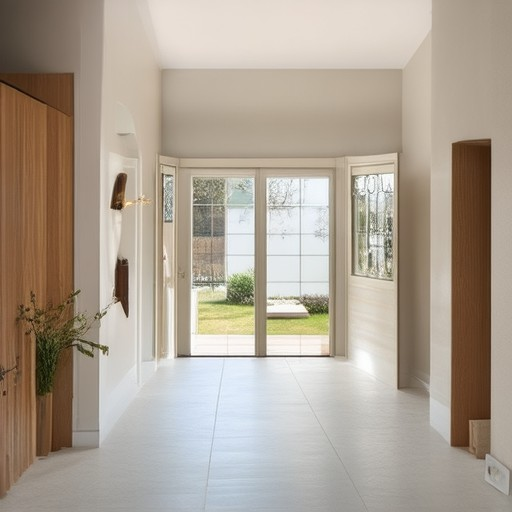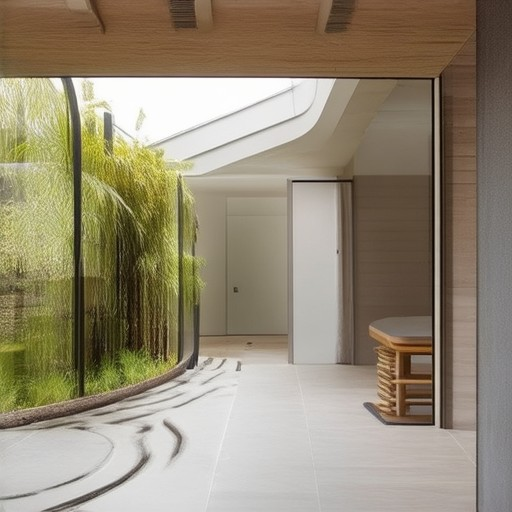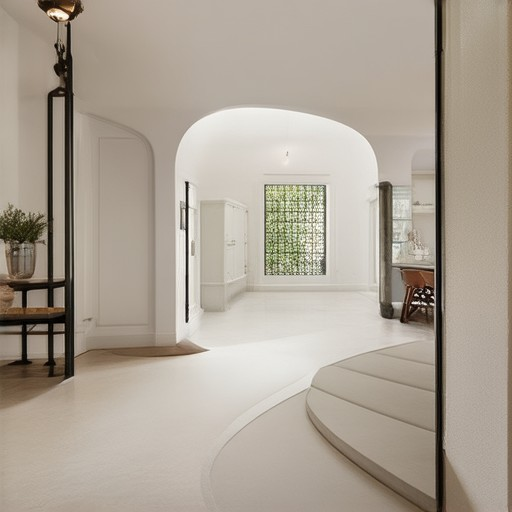Creating a functional entryway that balances style and practicality is essential for making a great first impression while enhancing your home’s functionality. Whether you’re designing an entryway for a small space or aiming to maximize your current setup, understanding the key elements that contribute to a well-designed entrance can transform the way your home feels. From optimizing layout and space to incorporating clever decor and storage solutions, there are countless ways to elevate your entryway. In this article, we’ll address common questions and provide expert tips on how to create an entryway that’s both stylish and functional, ensuring your front door welcomes guests with warmth and efficiency. Explore everything from small entryway design ideas to modern foyer designs, and discover how even the most compact spaces can become hubs of practicality and charm.
Key Takeaways
– Understand the differences between foyers and entryways, as size, location, and purpose vary widely.
– Know that an open entryway is often referred to as a vestibule, enhancing accessibility and comfort.
– Consider the benefits of incorporating a foyer or alternative spaces like mudrooms for improved functionality.

The Three Basic Types of Entryways Explained
When designing or renovating a home, choosing the right entryway can significantly impact its functionality and aesthetic appeal. Understanding the differences between the three primary types of entryways can help you decide which one best suits your lifestyle and architectural style. Below, we delve into each type in detail.
1. Formal Entryways
Formal entryways are designed to make a grand impression and are often found in traditional or upscale homes. These entryways typically feature:
- Arched Doors : Arched entryways add elegance and sophistication, often complementing styles like Victorian or Georgian architecture.
- Heavy Timber Doors : Solid wood doors with intricate detailing are common in formal settings, contributing to a sense of warmth and security.
- Fancy Hardware : Decorative door handles, knockers, and hinges elevate the entryway, making it a focal point.
Best For : Families who value aesthetics and want a welcoming yet imposing entrance.
2. Casual Entryways
Casual entryways are more relaxed and suited for modern, minimalist lifestyles. They often incorporate:
- Sliding Glass Doors : Perfect for areas with scenic views, sliding glass doors offer a seamless connection between indoors and outdoors.
- Flush Doors : Smooth, flat surfaces with minimal detailing give a clean, contemporary look.
- Simple Hardware : Basic door knobs and handles that don’t detract from the overall simplicity of the space.
Best For : Urban dwellers or those aiming for a low-maintenance, sleek appearance.
3. Service Entryways
Service entryways are functional and practical, ideal for multi-level homes or properties with separate living quarters. Key features include:
- Steel or Glass Doors : These materials are durable and provide security, making them perfect for garages, basements, or secondary entrances.
- Minimalist Design : Simplistic designs reduce clutter and ensure easy access, fitting well in industrial or loft-style homes.
- Keyless Entry Systems : Advanced locking mechanisms add convenience, especially for busy households.
Best For : Homeowners who prioritize functionality and ease of access, such as those with pets or frequent visitors.
By understanding these entryway types, you can choose one that aligns with your home’s architectural style and lifestyle preferences. For further inspiration, explore our guide on choosing the right front door or discover how architectural styles influence entryway design.
How to Layout an Entryway
To create an inviting and functional entryway, consider the following steps:
- Define the Space : Start by assessing the size and layout of your entryway. Determine if you need seating, storage, or both.
- Choose Storage Solutions :
- Coat Rack : Ideal for hanging coats, jackets, and accessories.
- Shoe Cabinet : Useful for storing shoes and seasonal gear.
- Bench with Storage : Provides seating and extra space for odds and ends.
- Add Seating :
- Include a bench or a small chair for sitting while putting on shoes or waiting for others.
- Install Lighting :
- Use a lamp or wall-mounted lights for task lighting.
- Consider a mirrored surface to reflect light and make the space feel larger.
- Select Decor Elements :
- Rug : Place a rug at the entrance to define the space and add warmth.
- Wall Art or Mirror : Add personality with artwork or a mirror for reflection.
- Hooks : Install hooks on the wall for keys, scarves, or bags.
- Consider Color Scheme :
- Opt for a warm color palette for the walls to create a welcoming atmosphere.
- Keep the decor simple to avoid visual clutter.
- Furniture Placement :
- Ensure furniture placement allows for smooth movement through the space.
- Use a console table for keys, mail, and other essentials.
- Seasonal Touches :
- Add a decorative wreath on the door during holidays or special occasions.
- Durable Flooring :
- Use weather-resistant flooring materials and consider a mat inside the door.
- Keep It Simple :
- Focus on functionality and avoid excessive decor to prevent clutter.
By thoughtfully combining these elements, you can create an entryway that is both stylish and practical, setting a positive tone for the rest of your home.

How Can I Make My Entryway More Welcoming?
To enhance your entryway and create a welcoming environment, consider the following thoughtful enhancements:
- Improve Lighting : Install bright, warm lighting fixtures or opt for accent lights to illuminate the space. Consider energy-efficient options for long-term benefits. For added convenience, integrate motion sensor lights.
- Add a Welcome Mat : Place a durable, decorative doormat with a welcoming message like “Welcome Home” at the entrance.
- Choose a Warm Color Scheme : Opt for paint colors in warm hues such as yellows or reds for the front door or hallway. Pastel shades can also contribute to a cozy atmosphere. Incorporate plants in attractive pots to add life and color.
- Personalize with Storage Solutions : Install a coat rack or bench with under-seat storage for organization. Add hooks for coats, scarves, and bags to streamline daily routines.
- Display Family Photos : Frame and display meaningful photos in a prominent spot to infuse personality and warmth into the space.
- Furniture Placement : Introduce a small bench or console table for seating and storage, enhancing comfort and functionality.
- Rug Selection : Add a sized rug in neutral tones to define the entryway and improve comfort underfoot.
- Introduce Scents : Use subtle scented candles or air fresheners to create a welcoming aroma without overwhelming guests.
- Consider a Welcoming Sign : Hang a personalized sign like “Home Sweet Home” to greet visitors warmly.
- Optimize Space and Flow : Keep surfaces clutter-free and ensure adequate movement space. Use reflective elements like mirrors or wall art to enhance the sense of openness.
- Seasonal Touches : Rotate seasonal decorations to refresh the entryway’s appearance throughout the year.
- Energy Efficiency : Enhance insulation or install draft stoppers to improve comfort, especially during colder months.
By thoughtfully combining these elements, you can transform your entryway into a warm, inviting space that welcomes both guests and residents alike.

What is the Difference Between a Foyer and an Entryway?
A foyer and an entryway are both transitional spaces in a home, but they differ in style, function, and common usage. Understanding the distinction can help you choose the right terminology for your space.
What is a Foyer?
A foyer is typically found in larger, grander homes or those with a more formal layout. It is often referred to as a vestibule and serves as a buffer between the exterior and the main living areas of the house. Foyers are usually more spacious and may include features like shoe storage, coat racks, or a place to sit while removing shoes. In many cases, the foyer leads directly into the hallway or living room.
What is an Entryway?
An entryway is more common in smaller homes, apartments, or spaces with an open floor plan. It functions similarly to a foyer but is generally less formal and more compact. Entryways are often located near the front door and may include a console table, wall hooks, or a bench for sitting. They are designed for practicality rather than decor.
Key Differences
- Size and Space: Foyers tend to be larger and more elaborate, while entryways are typically smaller and more functional.
- Location: Foyers are found in grander homes, whereas entryways are common in smaller dwellings or those with open plans.
- Purpose: Both serve as a transition space, but foyers may emphasize aesthetics, while entryways focus on functionality.
When to Use Which Term
- Use “foyer” if you’re describing a space in a larger home or one with a more formal entrance.
- Use “entryway” for smaller spaces or those with less formal decor.
By understanding these distinctions, you can accurately describe the space in your home and choose the right terminology for your needs. If you’re looking to enhance your entryway or foyer, consider exploring Peck and Gartner ‘s DIY project ideas and interior design tips for more inspiration.
What is an Open Entryway Called?
An open entryway is commonly referred to as a vestibule in architectural terminology. A vestibule functions as an unenclosed space that provides a protected transition between the exterior and the interior of a building. It acts as a buffer against weather conditions and offers a welcoming area for individuals entering or exiting the premises.
While vestibules are often associated with smaller, more straightforward designs, larger and more open spaces resembling foyers can also serve similar purposes. Foyers, though typically more expansive and ornate, are frequently found in residential settings, public spaces, hotels, and theaters. They are sometimes mistaken for vestibules due to their shared functional roles, despite differences in scale and complexity.
In summary, whether it’s a vestibule or a foyer, these elements enhance the accessibility and comfort of entryways, contributing to the overall design and functionality of a building.

Is a Foyer Necessary for the Function of a Home?
A foyer is an essential element in many homes, serving both functional and aesthetic purposes. While some may debate its necessity, its presence can significantly enhance the comfort and efficiency of daily life.
Key Functions of a Foyer
- Welcome Guests: A foyer acts as the first impression, providing a warm welcome for visitors.
- Shoe Storage: It offers a convenient place to remove and store shoes, keeping your home clean.
- Buffer Zone: Foyers help separate the outdoor environment from the indoor living spaces, reducing dirt and noise.
- Storage Solutions: Many foyers feature cabinets or shelves for additional storage needs.
The Debate: Is a Foyer Necessary?
Some homeowners question the necessity of a dedicated foyer, arguing it could be redundant in smaller spaces. However, many find its functionality irreplaceable, especially in multi-level homes or those with pets and children.
Alternatives to a Formal Foyer
- Mudroom: A mudroom can serve similar purposes, offering a practical space for removing footwear and storing belongings.
- Entryway Console: A console table can double as a spot for keys, coats, and shoe storage without needing a separate room.
- Foyers Without Walls: Open-plan designs often incorporate a transitional space that mimics a foyer’s utility.
Conclusion
A foyer is not universally required but brings undeniable benefits to many households. Its role as a versatile transition zone makes it a valuable asset, particularly in busy families or those who value convenience. Whether you opt for a formal foyer or a creative alternative, the goal is to enhance your home’s functionality and comfort.





0 Comments